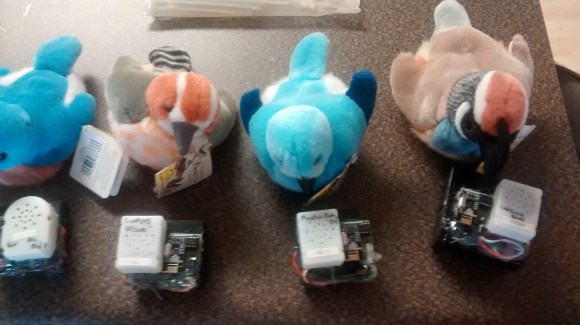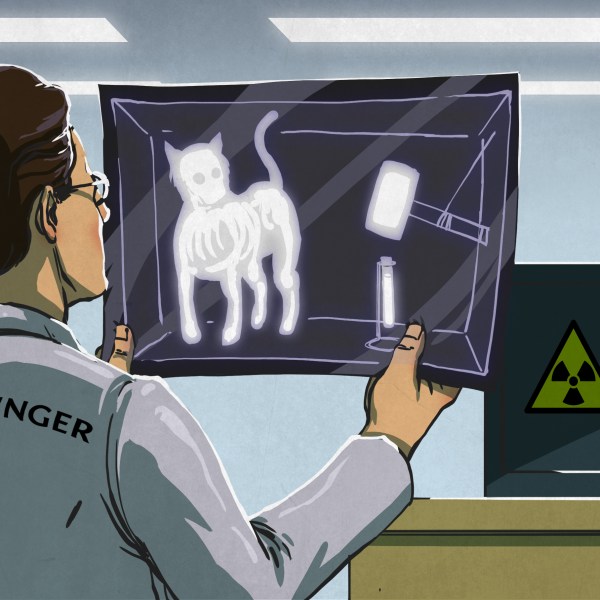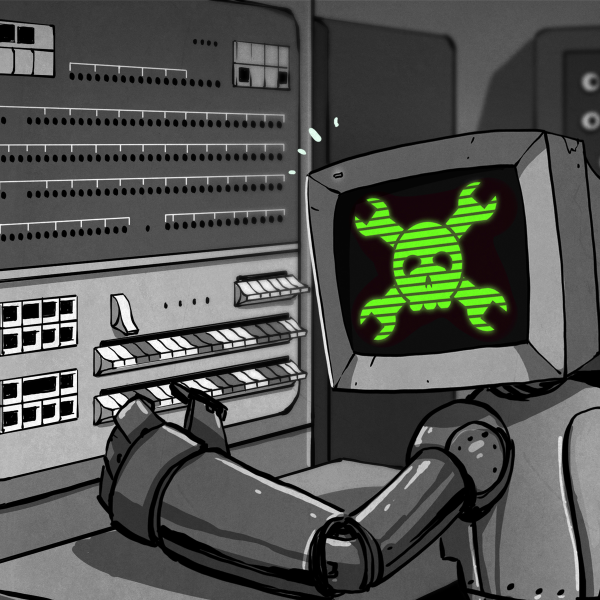
No, not real birds! [Kyle] works in operations at a web company and needed a way to send alerts to his fellow coworkers, so he modified a flock of Audubon Society plush birds to respond to a Bluetooth beacon.
Using NRF24L01+ Bluetooth Low Energy modules, [Kyle] installed one each in these battery-powered singing birds. The devices are presumably powered off of the battery that comes with the birds, but the use of the BTLE module means the batteries won’t discharge as rapidly.
[Kyle] also built an API that works over HTTP or IRC, which means that the employees in the office can activate everyone else’s birds over a simple and intuitive interface. The birds can be activated one at a time, or all together in “panic” mode as one giant flock (in case of an emergency in the office). They can also be activated one at a time on a specific hour to simulate the Audubon Society’s bird call clock.
He calls the device equail and it’s a very unique notification system with a lot of applications. All of [Kyle]’s code and documentation of his project are available on his github site. He also used this primer on BTLE to get started, and this guide on sending data over BTLE to help get the project in the air.
















So lemme guess… They’re twitter activated?
lol, insert rim shot here.
oh god
interesting ..
NRF24L01+ supports Bluetooth Low Energy?
Well, now that you mention it http://hackaday.com/2013/09/21/sending-data-over-bluetooth-low-energy-with-a-cheap-nrf24l01-module/
But I wouldn’t consider it very usable outside of just a concept hack.
No, they don’t. But according to his readme:
“The device uses a NRF24L01+, set with a very specific destination address, on channels 37-39, which happen to overlap with some of the Bluetooth LE spec.
By configuring the radio to ignore stock (Nordic) crcs, and by implementing the BTLE CRC and whitening algorithms, we can interpret legitimate beacons and respond to them.”
Surely that doesn’t give you the important bit of BLE, the low energy bit?
The nRF modules already had the low energy problem solved. That’s why BLE is based on the same encoding and channel spacing as the nRF modules.
I couldn’t find a graphic of the schematic, so I loaded it up in eagle and took a screen shot:
http://picasaweb.google.com/lh/photo/iOjelseBqVh6TIMGalWnQOnROep4a-1c8dwXpIi0d-0?feat=directlink
A modern version of the old Alfred Hitchcock movie? =P